Flesh-Eating Evolution: VFX Supervisor Adam Gascoyne Reveals How “28 Years Later” Infected Got Scarier
In 1964, Queens, a woman named Catherine Genovese was attacked and murdered outside her New York apartment. Even after screaming for help, none of the neighboring witnesses called the police. The case became infamous for what is known as the bystander effect, which suggests that the more people present in a social situation, the less likely anyone is to step in and assist. Now, imagine living in a zombie apocalypse. Not among the infected who want to eat you alive, but instead, you’re one of the lucky ones relaxing in Bali or skiing in Colorado, knowing full well that an island of innocent people is pretty much cooked. Are you ok with that? It’s a question that underlines the many themes in Danny Boyle’s cult classic follow-up, 28 Years Later. Humanity has tried all that it could to reverse the dystopian disaster (see 28 Weeks Later), but now, the empathy-altruism hypothesis has been completely tossed out the window, and the entire planet is left holding the phone, wondering whether to make that call.
The story, penned by Alex Garland, picks up with Jamie (Aaron Taylor-Johnson), his wife Isla (Jodie Comer), and their 12-year-old son Spike (Alfie Williams) together in a community away from the chaos – only the high tide separates them from danger. The village has one rule: There are no search parties if you’ve gone missing. What happens next? Jamie takes Spike over the causeway to kill his first infected, and despite returning safely, it does not go as planned. However, a silver lining is that the boy discovers a doctor living there who can help his ailing mother. Returning is a risk he’s willing to take. What unfolds is a journey between a mother and son, exploring themes of hope, defiance, family, and mortality. Oh, and monsters. Flesh-eating, horrifically frightening monsters.
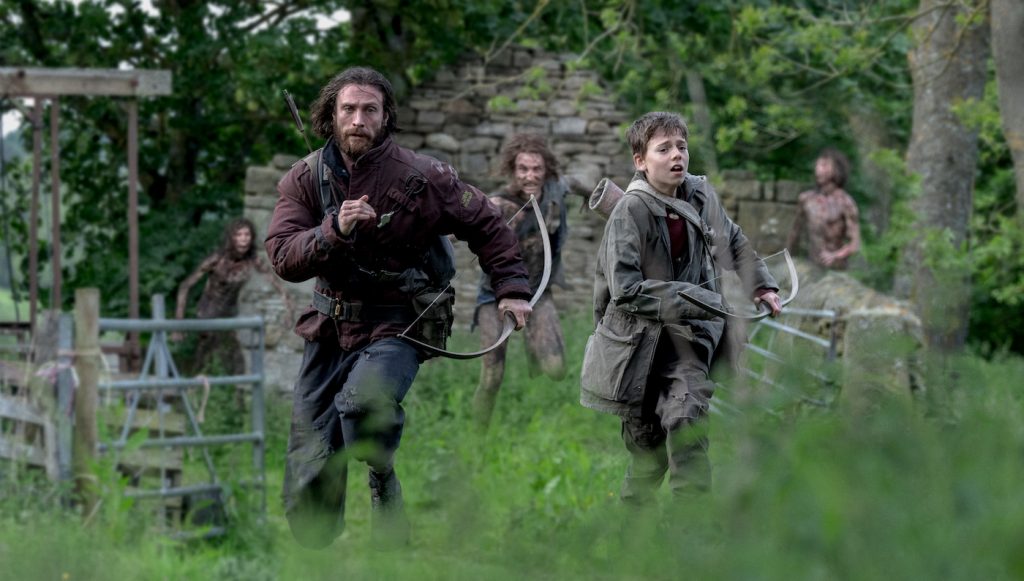
Creating the unsettling gore was partly the responsibility of the visual effects team, overseen by VFX supervisor Adam Gascoyne of Union VFX. The London-based facility has a sister shop in Montreal and was co-founded by Gascoyne and Tim Caplan in 2008. They have since had their hand on projects like The Two Popes, The Banshees of Inisherin, Saltburn, and television series The Regime and Slow Horses. Alongside Gascoyne, supporting Boyle’s vision were cinematographer Anthony Dod Mantle, special effects supervisor Sam Conway, hair and makeup designer Flora Moody, and special makeup effects supervisor John Nolan. Together, they crafted an in-camera first approach to the physical presence of the infected. And after nearly three decades, they have evolved, hunting in packs with some becoming beastly alphas, while others mutating into tubby manatee-like ground feeders.
Below, Gascoyne discusses how visual effects took part in making bloody kills, terrifying monsters, and shooting on a rig made up of 20 iPhones to energize the immersive, bone-chilling sequel.
In prep, what did Danny talk about in terms of grounding the realism of the environment?
The first thing they decided was where to place it. They took it away from the urbanization of the UK, which is what usually would pose an issue when you’re making a film like this, because you have to deal with the decay of a city. So they put it in the north of England, where there’s so much wilderness up there, and it sort of made sense that these people would flee to this isolated island where they’re pretty safe and set up these communities.
What happened next?
I think that the exploration of the media to shoot it on iPhones and various other formats was viewed as a way to keep everything very light and nimble. But to contrast that, to pick the aspect ratio they shot at to really capture these amazing huge wildernesses that we were in. We had a very good starting point from which to head in the right direction.
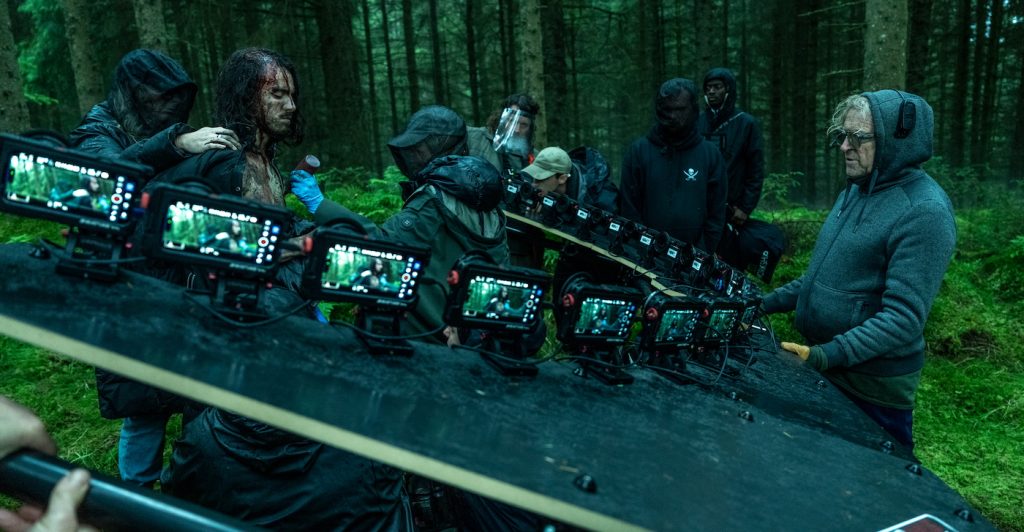
During testing, did you find that there needed to be a bare minimum amount of data in the image to achieve the results you were looking for? Like using ProRes RAW versus the ProRes codec?
We did quite extensive camera testing. You never get as much time as you want to do that sort of stuff, but also with working with Danny and Anthony for probably about 25 years, you learn that there’s no real limit to the different types of cameras or the number of cameras they’ll use. We’ve shot with everything from SI-2Ks to GoPros, and now we’ve shot with iPhones. Some days, we had over 36 iPhones running on the set. Anthony’s always shot with multiple formats. That’s just one of the things that they do. And that’s what gives the film such great texture. Some technical issues arose from the ProRes 422, but we managed to work a pipeline around them. And it was great to work with the footage. It wasn’t really that much of a surprise.
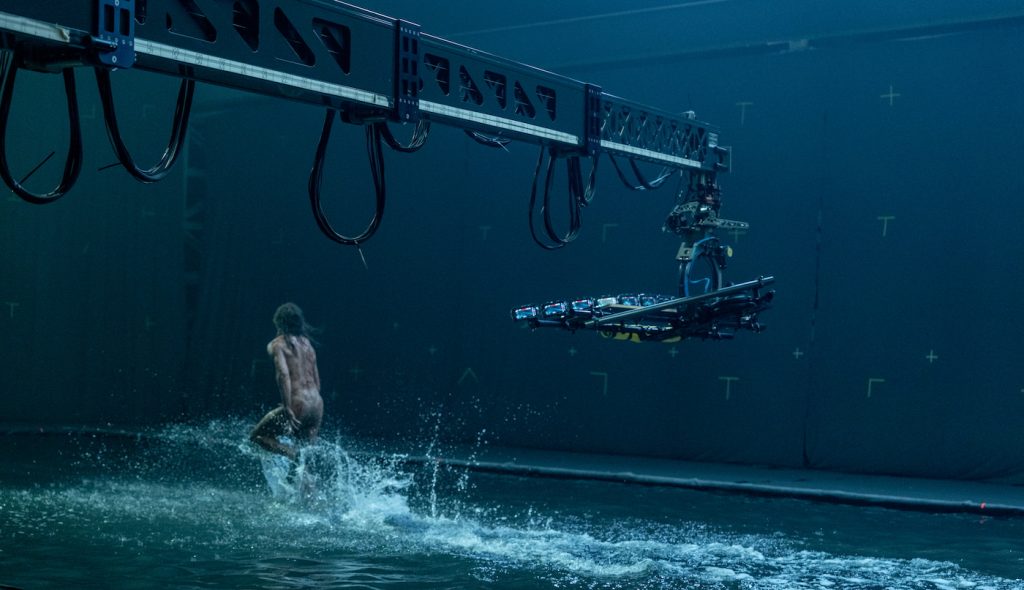
What was the collab between practical makeup and vfx in creating the bad ass herculean alpha infected who are smarter and more evolved than the normal infected?
The thing about working with Danny and VFX is that he never really wants to show the visual effects. In a way, he wants to be invisible 100 percent. He wants to feel like you’ve just discovered these environments or these creatures that are kind of perfectly, as if you would have captured them in-camera. So that’s how we approached the Alphas. It was prosthetics.
So, these were actual, very large and imposing people?
Danny found enormous guys to wear these prosthetics. One of them was an MMA fighter [Chi Lewis-Parry]. The other was a basketball player. And that was their starting point. And then they went through a whole series of sort of development of ideas of what would have happened to these guys and how they evolved into these pretty terrifying, very fast monsters.
That’s great. Was there any cleanup involved with the alphas, or pretty much as is?
Yeah, that’s pretty much as is. I mean, there was stuff that we did throughout the movie that sort of helped some of the illusions. But most, I mean, we had some great people on set who were taking care of that. Obviously, the stunt guy, when they’re doing stunts, they have to wear certain safety gear. So we did get rid of some of that and harnesses and things like that. However, a great prosthetics team was involved.
With everything having an in-camera feel, did you need to create digital doubles for the larger swarms of infected?
There was never an instance where we needed hundreds of them. They were all in small packs and hunted that way. We did endeavor to do everything in-camera, but there are some doubles in very wide shots that we couldn’t capture. So we did make digi doubles and used them a handful of times. But we did try to steer clear of that again because Danny just wanted to capture the sort of terrifying chases in-camera because it’s much more visceral if you do it that way.
The bow and arrow are the go-to weapons for the people of the town, and we get to see plenty of bloody kills. What was the collaboration in creating those moments?
We did work very closely with Sam on special effects for the arrow hits. He prepared these amazing squibs, which would go off, and gave these beautiful crowns of blood as the arrows went through. So we removed the squib element of it, and that was quite a big part of the work. But the actual crowns of blood were all captured in-camera. So Sam and his team did a great job there.
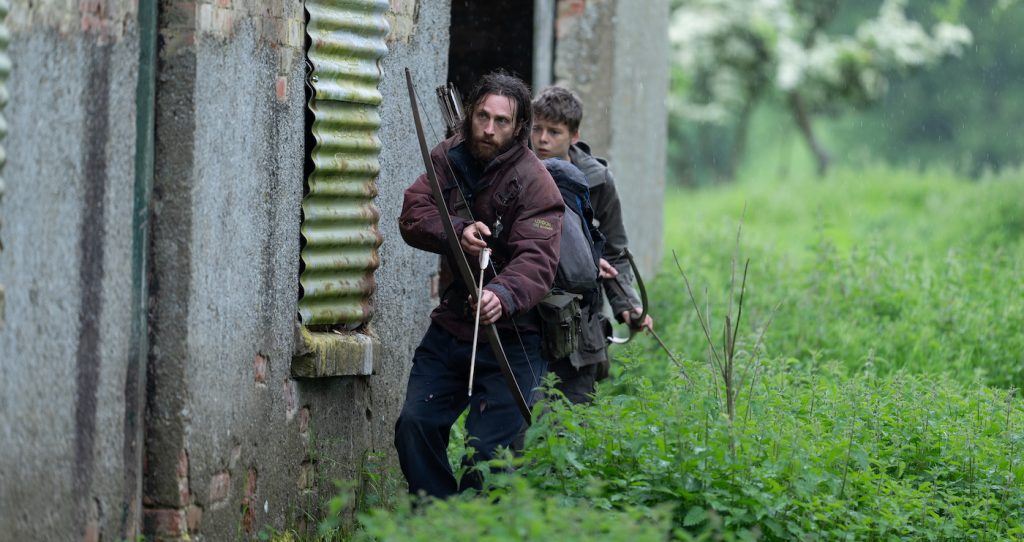
Cinematographer Anthony Dod Mantle created these beautifully soft moments, almost out of focus. Did VFX have to replicate that look for any of the work?
Anthony has a box of tricks. He’s a master at creating these beautiful images, and we did. We did try to replicate some of that in some of the sequences, just by softening and trying to sort of increase the atmosphere in some shots. Certainly, on the causeway and in some of the later scenes, we tried to mimic it.
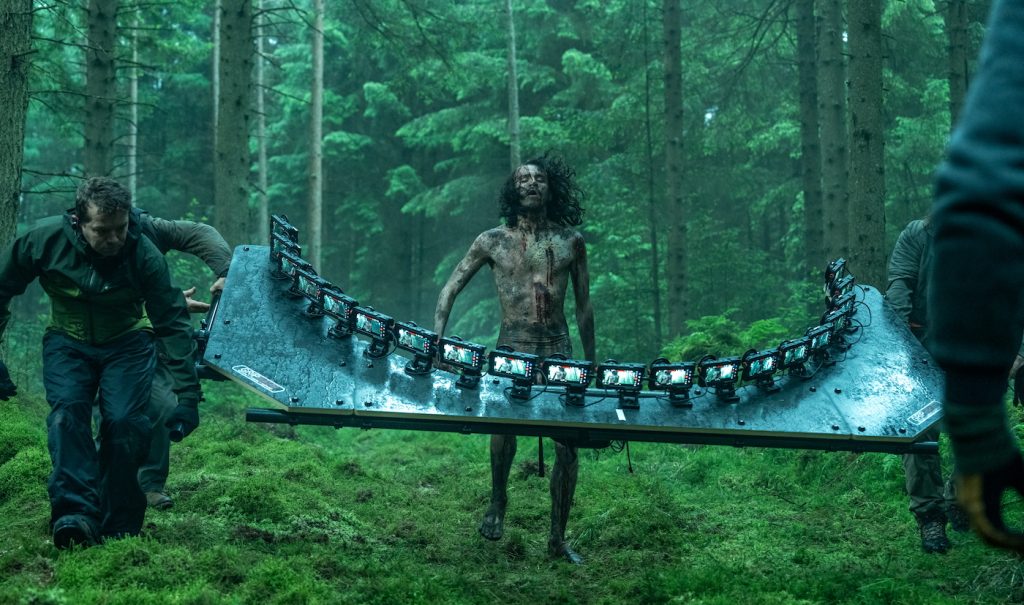
Speaking of the causeway, there’s a scene where Spike and his father dash across trying to escape an alpha. We’re guessing the heavy-lifting was in water work?
There’s quite a significant amount of work in that particular sequence. We had to create an environment for that to happen in, and then extend all that water out and put it in the sky. We had some amazing photographic references from photographer Dan Monk at the Kielder Forest Observatory. There are certain times of the year when the Milky Way is perfectly clear because there’s no light pollution around. So, it inspired us to put this amazing sky above the causeway, because we felt that, after 28 years of no light pollution, you would see these amazing, beautiful vistas at night.
What kind of practical set made the causeway?
We had about a 100-meter stretch of water, and then we recreated the environment and extended the water out. We did play around with the contact water hat a little bit, too.
Yeah, when their feet touch the water, there’s almost a glow. It reminded me of the bioluminescent waves created by plankton, which you can see near San Francisco.
Yes, the sort of luminescent plankton that you get. Yeah, that was definitely the idea behind some of that brighter wake.
Some shots were recorded with a rig mounted with 20 iPhones. What was the visual effects’ involvement in making that happen?
We put together a similar rig on a previous job using different cameras, so Anthony and I had some experience with that on our last job. So, we took what we learned from that and tried to build a slightly more portable and robust rig. We had a 20-camera rig and a 10-camera rig, which was more handheld. With the 20-camera rig, we did a lot of testing. A lot of prototypes were made by the grips. It was a really great piece of kit, and it was a lot of fun to use. A lot of R&D went into it, but when you see the blood from when the arrows hit, I think it really does do what we set out to do, which was the gore.
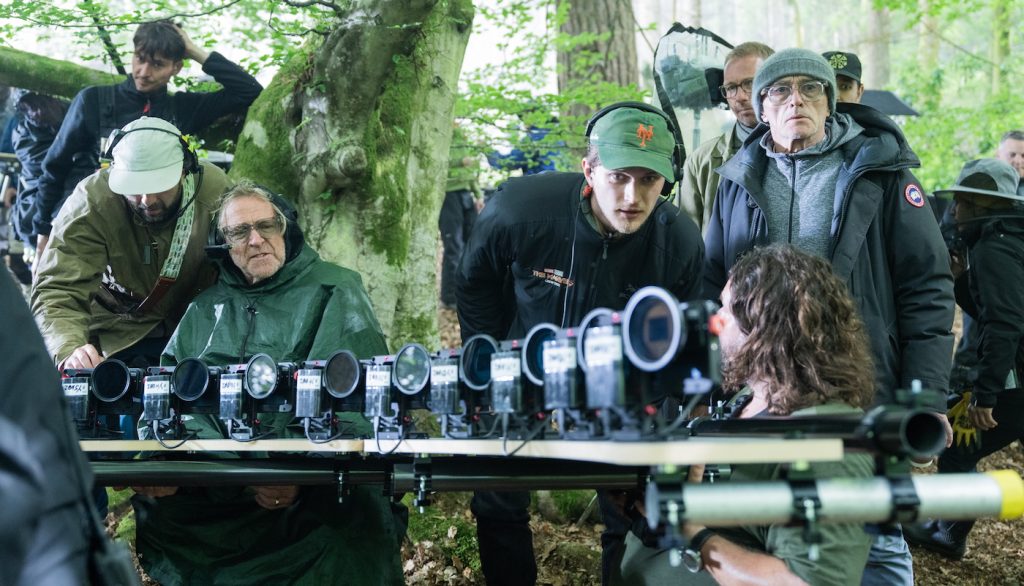
Danny is a director who consistently pushes the technical side of filmmaking, and that’s not a bad thing.
The fact that we just made a film with iPhones, hopefully, that’s going to inspire somebody to go out there, pick up a phone, and make a movie. It was similar to the original film, which used Canon XL1 DV cameras. Suddenly, you could go and buy a consumer camera, and it was okay to go out and make something. And out of that, you get the films like Blair Witch and all these other films that come from the idea of making films from consumer cameras. It’s a good thing to keep the surprises going.
28 Years Later is in theaters now.
Featured image: An infected in Columbia Pictures’ 28 YEARS LATER.



